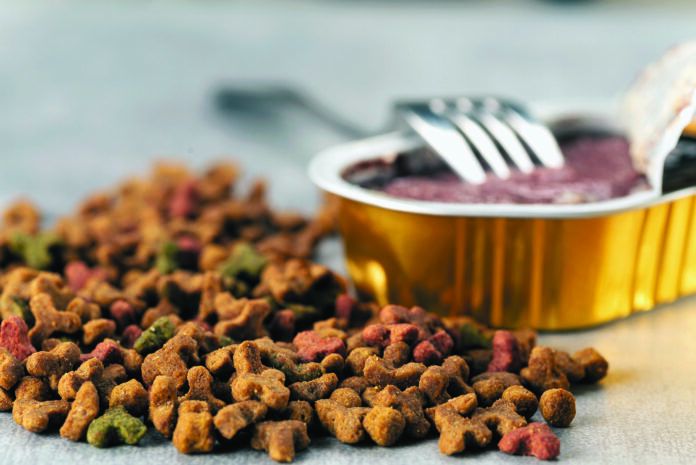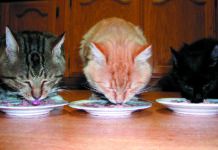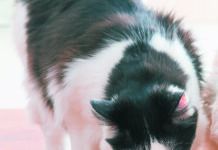Have you been feeding your cat dry food but wondering if she would be healthier with wet? Maybe you’ve stayed away from wet food because it’s much more expensive and requires more trips to the store to buy a bunch of small cans, pouches, or plastic trays rather than one big bag. You also have to rinse out the containers and keep them separate for recycling, or they end up in landfills. Still, many sources report wet food is better for cats. Is it? Let’s look at the common reasons given for why people often choose wet food for their pets and how they stack up scientifically.
Lower in carbohydrates. Wet food is generally higher in protein and/or fat and lower in carbohydrates than dry (although not always). And many people believe that because cats are carnivores, they should not be eating carbs, which come from plants. It’s true that in the wild, cats eat very little in the way of carbs. But there is no evidence that pet cats who live in people’s houses and eat lower-carbohydrate diets are any healthier than cats who are given diets higher in carbohydrate. For most healthy cats, it is not necessary to choose wet food over dry for its lower carbohydrate content.
Higher in water content. Many cats are not naturally big water drinkers, and they don’t need to be. Cats’ bodies are designed to help them maintain adequate hydration for normal function. However, there are a number of medical conditions for which a cat may benefit from increased water consumption, and feeding a high-moisture diet is generally more effective than trying to cajole a cat to drink more from a bowl. These health conditions include cystitis (inflammation of the bladder lining), kidney disease, and kidney and bladder stones. In such cases, wet food could prove a real boon.
“Cats evolved in the desert,” explains board-certified veterinary nutritionist Cailin Heinze, VMD. “They’re generally not big water drinkers and get most of their moisture from food ‘in the wild.’ If they’re eating dry food, they usually don’t drink enough to compensate for the lower water content in situations where higher water intake is optimal. Dry food is about 10 percent water, on average, whereas wet food is 78 percent water on average, and sometimes as high as 85 percent. That extra moisture can be really helpful for a cat with a urinary tract illness.”
Easy to chew and swallow. Normally, chewing and swallowing is not an issue. But if a cat has pain in her mouth or throat, say, from dental disease, a tumor, or some other problem, it could be painful or hard for her to chew or swallow. Wet food can more or less be mouthed without being ground by the teeth, so it makes a good alternative for a cat who can’t easily handle the mechanics of getting dry food down.
Bottom line: If your cat is healthy and enjoys the food you have chosen for her, whether wet or dry, there’s no reason to switch. That’s especially the case in light of the fact that dry food is much cheaper, more convenient, creates less waste that might end up in landfills if not properly recycled, and is actually preferred to wet food by many cats. But if she requires more water for medical reasons or has difficulty eating, you might want to consider wet food.
Keep in mind that the reasons for needing more water or for difficulty chewing tend to come on later in life, and many cats will not eat foods as adults that they were not offered as kittens. So even if you plan on raising a cat with dry kibble, it’s a good idea to feed her some canned food when she’s very young so she can get used to the texture and be willing to eat it later if it becomes medically necessary.





I always heard dry food was better….for their teeth. I have two new kittens (5 months old now) and I feed them a “mix”. I use small paper plates so I can pitch them after eating. On these, I put one can of wet food, a handful of dry food, and one can of gravy lover’s. Then I mix these so the dry food gets wet and flavored with the wet. They love it. I put out an extra plate of dry when I’m gone (for snack).
Dry food, being so high in carbs, is good for their teeth… like potato chips is for humans’ teeth.
In other words, it’s very bad. There is hardly any “scraping” action from hard kibble (cats dob”t chew, they bite and the kibble just shatters) and the carbs in the mouth leave a film on the teeth that plaque forming bacteria *love*.
I have a 7 y.o. russian blue that I give dry food in the morning and she munches all day while I’m at work. when i get home I give her a bit of the wet stuff. Thank God she’s healthy and is maintaining a good weight.